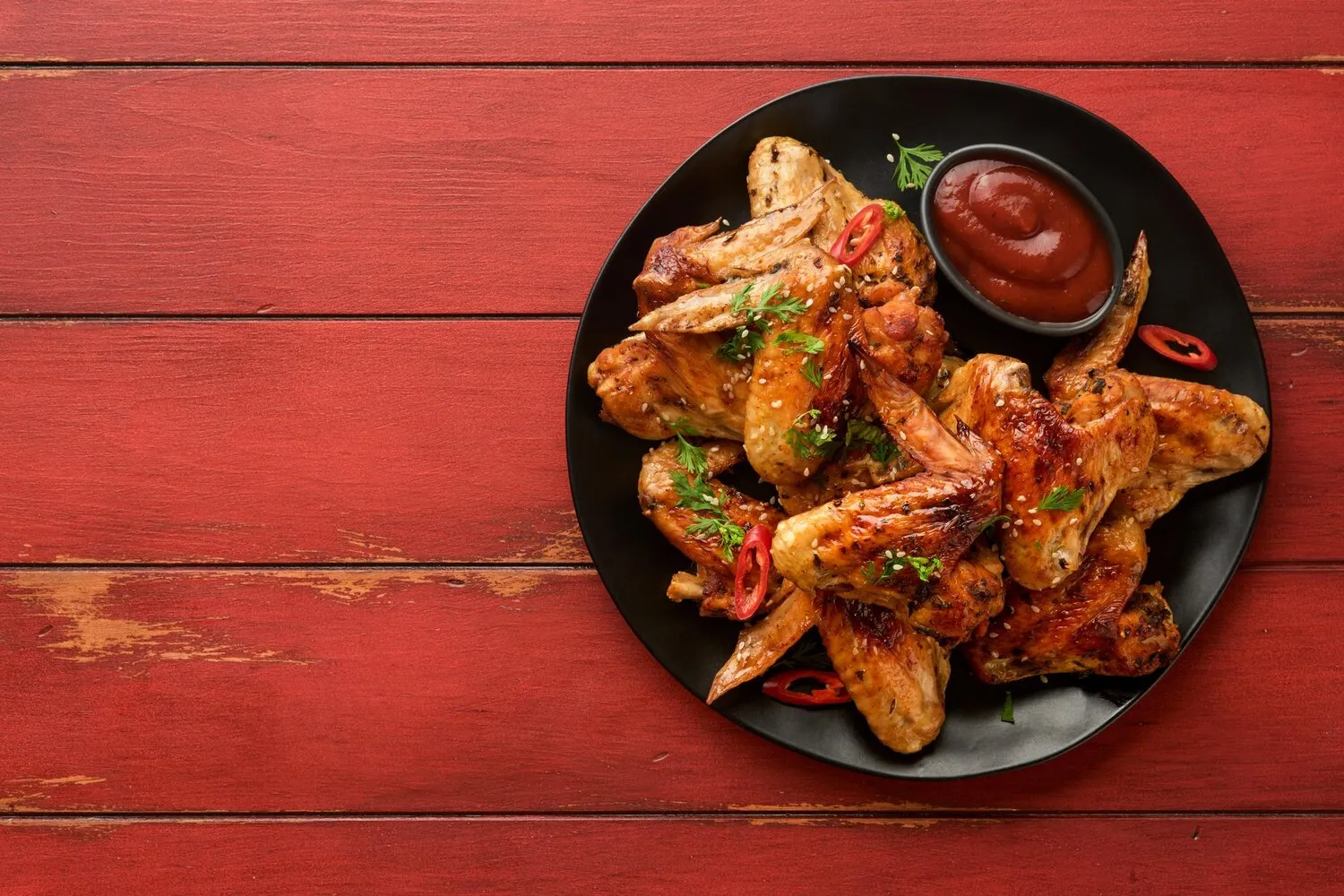
Boneless Wings
Breaded chicken pieces tossed in your choice of signature sauce.
Nutrition Facts
* The % Daily Value (DV) tells you how much a nutrient in a serving of food contributes to a daily diet. 2,000 calories a day is used for general nutrition advice.
Boneless wings emerged in the late 20th century as a convenient, less messy alternative to traditional bone-in chicken wings, capitalizing on the popularity of chicken wings in American sports bars and casual dining.
Boneless wings are deeply ingrained in American sports culture and casual dining, often served as appetizers or main courses in restaurants and bars.
Sports Culture
Boneless wings are a staple food during sporting events, particularly football games, providing a shareable and convenient snack for groups of people.
Casual Dining
They are a popular menu item in casual dining restaurants and bars, appealing to a wide range of palates with diverse sauce options.
Convenience
The boneless format offers a less messy and more convenient eating experience compared to traditional wings, making them a preferred choice for some consumers.
Boneless wings offer a diverse flavor profile primarily driven by the sauce, ranging from savory and spicy to sweet and tangy, complemented by the crispy, seasoned breading of the chicken.
The core flavor is the chicken itself, which can be subtly seasoned or unseasoned depending on the recipe. The breading contributes a crispy texture and often includes spices like paprika, garlic powder, onion powder, and pepper. The defining flavor element is the sauce, which can include buffalo sauce (vinegar-based hot sauce and butter), barbecue sauce (sweet and smoky), teriyaki sauce (sweet and savory soy-based), honey garlic sauce (sweet and garlicky), or numerous other variations.
Breading Technique
Ensure the chicken pieces are evenly coated with breading for consistent crispness. A double-dredge method (flour, egg wash, breadcrumbs) can enhance the texture.
Cooking Temperature
Maintain a consistent oil temperature (around 350°F/175°C) for even cooking and optimal crispness. Avoid overcrowding the fryer to prevent the oil temperature from dropping.
Sauce Application
Toss the cooked wings in sauce immediately after frying for maximum flavor absorption. Use a large bowl to ensure even coating.
Chicken Quality
Use high quality chicken breast and be sure to cut the breasts evenly to ensure equal cooking times.
Explore additional Wings dishes and restaurants
Explore WingsDiscover top dining spots and culinary experiences in Mesa.
Explore MesaLearn more about the food culture, restaurant scene, and culinary heritage of United States.
Explore United States